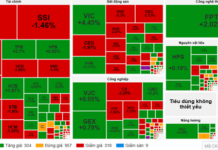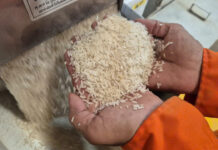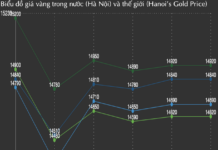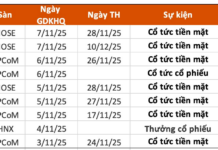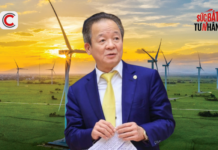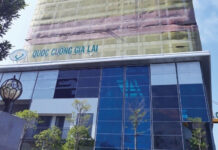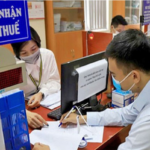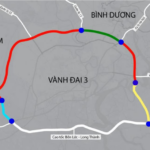Construction of Tran Hung Dao Bridge in Hanoi to Commence in 2025
In February 2024, the Hanoi People’s Committee convened a meeting to discuss the progress of the Tran Hung Dao Bridge construction project. The bridge will span the Red River in the city’s downtown area, connecting the Hoan Kiem and Long Bien districts. The project has an estimated construction cost of over 16,374 billion VND.
According to the Hanoi Transport Construction Investment Project Management Board, the preparatory work and design for the Tran Hung Dao Bridge will take place from 2024 to 2024. Construction is scheduled to begin in 2025 and be substantially completed in 2027.
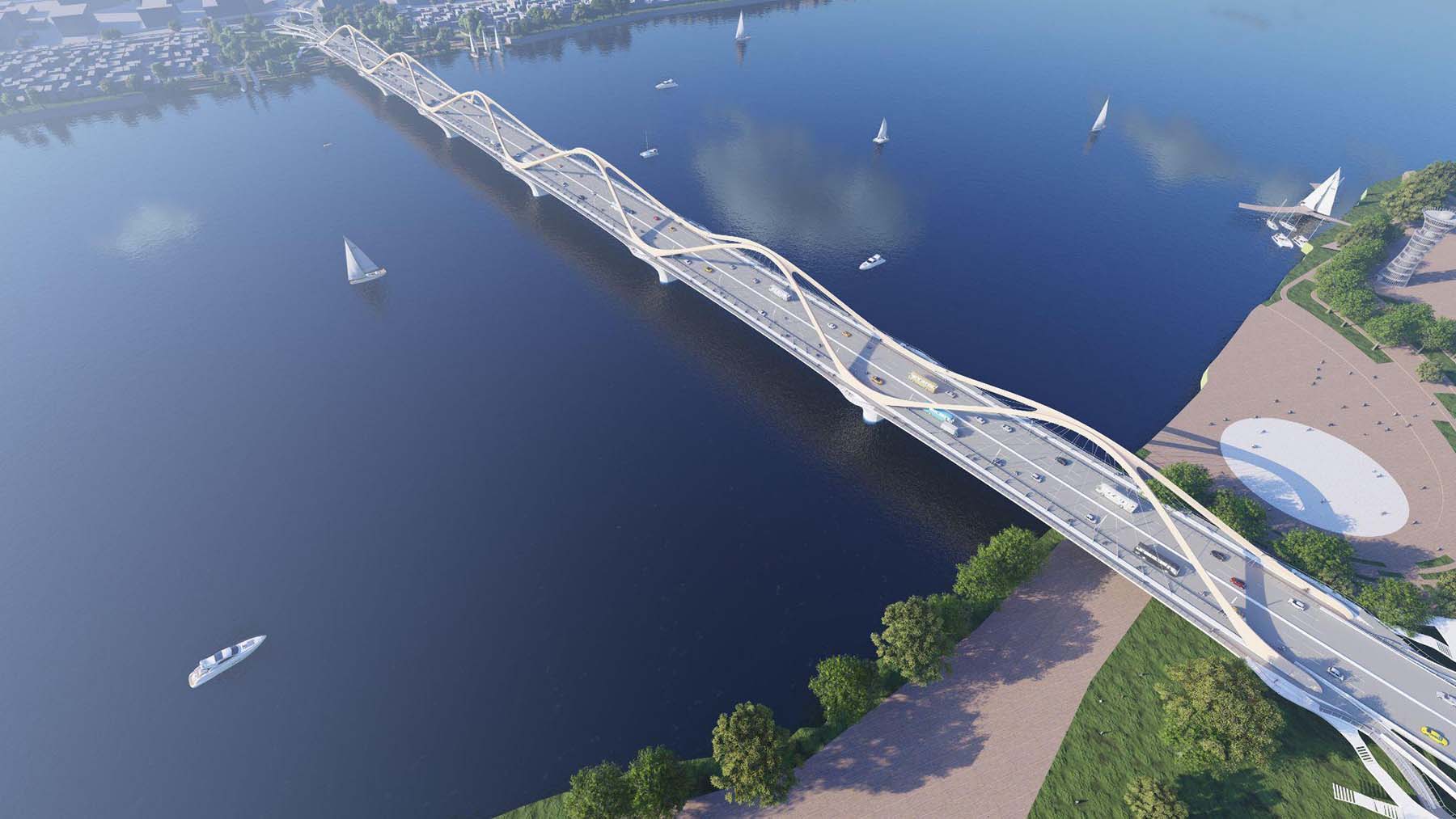
Perspective of the Tran Hung Dao Bridge upon completion. Image: Design firm
The bridge project will be located in Hoan Kiem district (Phan Chu Trinh and Chuong Duong wards), Hai Ba Trung district (Bach Dang ward), and Long Bien district (Long Bien, Bo De, and Gia Thuy wards). The starting point of the project will be at the intersection of Tran Hung Dao and Tran Thanh Tong streets, and the endpoint will be at the intersection with National Highway 5A (Nguyen Van Linh Street).
The Tran Hung Dao Bridge will have a total length of approximately 5.6 km, with six lanes for motorized vehicles, two auxiliary lanes, and two pedestrian lanes. The design speed will be 80 km/h.
The Hanoi Transport Construction Investment Project Management Board has assessed that the Tran Hung Dao Bridge will play a vital role in connecting the two banks of the Red River, contributing to the completion of the planned transportation infrastructure, boosting the capital’s socio-economic development, and enhancing the city’s riverside image.
A 16,000-billion-VND Project with an Infinity Symbol Design
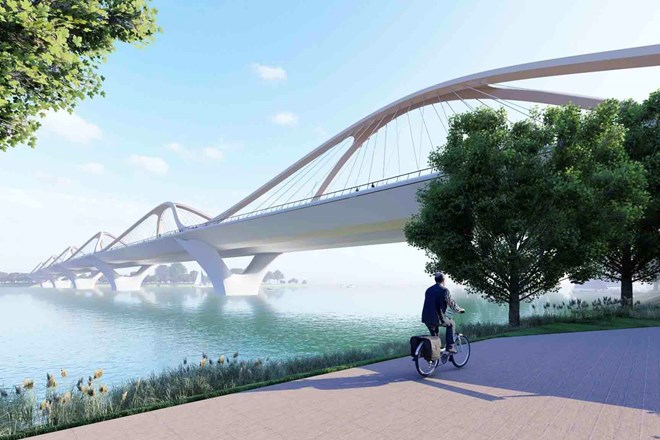
The Tran Hung Dao Bridge will be substantially completed in two years, connecting central Hanoi with Long Bien district. Image: Design firm
The investor for the Tran Hung Dao Bridge has organized an architectural design competition. The winning design, code-named THD12, will transform the Tran Hung Dao Bridge into a new iconic bridge in central Hanoi. The main arch will consist of two intersecting and repetitive curves, creating an infinity symbol across six spans.
The Tran Hung Dao Bridge project will be implemented in two components. Component 1 will involve compensation, support, and resettlement in the three districts of Hoan Kiem, Hai Ba Trung, and Long Bien. Component 2 will include the construction of the Tran Hung Dao Bridge and its approach roads. It will also involve the construction of a road from the Co Linh intersection to the project’s endpoint at Vu Duc Than Street, Gia Thuy Ward, Long Bien District.
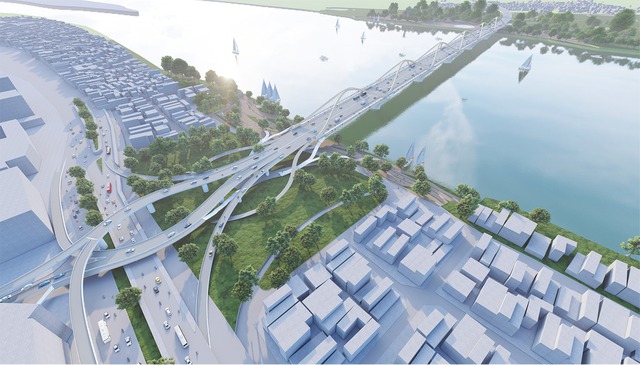
The Tran Hung Dao Bridge project has a construction cost of over 16,000 billion VND. Image: Design firm
To ensure feasibility, the Hanoi Transport Construction Investment Project Management Board has proposed that public investment be used for Component 1. Component 2 should be implemented as a public-private partnership (PPP) and build-operate-transfer (BOT) contract, with 50% of the funding coming from local government budgets. The project should also be included in the city’s investment attraction portfolio.
In this regard, Hanoi Vice Chairman Duong Duc Tuan requested that the Project Management Board collaborate with consultants and relevant units to study appropriate investment options that ensure feasibility. This includes considering the separation of the approach road connecting to Nguyen Van Linh Street into a separate project to facilitate the project’s early construction.
Additionally, Hanoi’s leadership has requested clear identification of investment mechanisms and resources for the main bridge, including BOT and budgetary allocations. Notably, if the PPP method is used, the budget funding should not exceed 50% of the total investment…

